Possible Roles for a Universal Hologram Reader in Optical Document Security
Stephen P. McGrew, PresidentNew Light Industries, Ltd.
Abstract:
This paper outlines the need for machine readability in holograms, various approaches to machine reading, and the problems of an absence of machine readability standards. The prospect of a Universal Hologram Reader is introduced and its implications are discussed. The word "Hologram" is used here to refer to all diffractive devices including rainbow holograms, 2D3D holograms, dot-matrix holograms, holographic stereograms, diffraction gratings, Excelgrams, Pixelgrams, Kinegrams, and anything else that diffracts light from a surface relief structure.
I. Introduction:
This paper is centered on a very important question: "How are counterfeit holograms detected?" I will frame the question in the form of a concrete example. Photographs of two different holograms are shown below. One of them is a valid security hologram, and the other is a counterfeit. Consider how a retail clerk in a department store, or how a customer in that store, can use this hologram to decide whether the product she is buying is counterfeit or valid.
| ORIGINAL? | COUNTERFEIT? | |
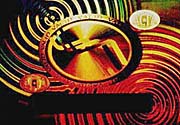 | 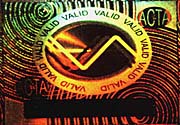 | |
| COUNTERFEIT? | ORIGINAL? |
I think we all must agree that even though a reasonably careful observer may see differences between the two holograms, not even an expert can know which is valid and which is counterfeit unless he has a valid hologram to compare them to. Because very few retail clerks have the training or experience to analyze holograms, and because there is no way for a clerk to compare a hologram on a card or package to a known valid standard hologram, the security value of holograms today is primarily forensic. That is, holograms can provide proof that a product is counterfeit, but they are of limited value in detecting counterfeits.
II. Forensic Features of Holograms
An expert with a microscope can, without too much difficulty, list some of the key differences between these two holograms:
- artwork details
- dot size
- dot shape
- dot spacing
- internal structures of the dots
- grating period and angle
- noise
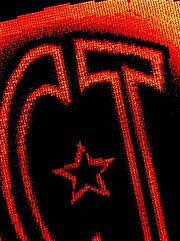 | 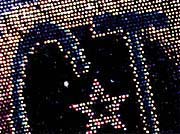 |
Figure 1: Artwork Details
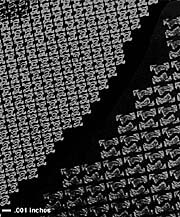 |  |
Figure 2: Microscopic Details
Unfortunately, a microscope is required to discern these differences. Although the differences might be useful for proving that a suspected label is indeed counterfeit, features that only an expert will notice are useless for detecting counterfeit labels in the busy environment of a retail store.
Think about it: there are thousands of different hologram designs on products all over the world. Do you know anybody at all who is qualified to decide which ones are valid and which are counterfeit? To bring this even closer to home, do you know anybody who can look at a VISA card and tell you with absolute certainty that it is not merely a good counterfeit?
III. Counterfeit Deterrence Value of Holograms
Despite the fact that it takes an expert to detect a good counterfeit hologram, holograms have become an accepted standard anticounterfeit device. This can be explained easily enough: until fairly recently there have not been very many hologram producers capable of making good counterfeits, so hologram counterfeiters couldn't really commit their crime and then disappear into the crowd.
Fortunately, the number of counterfeiters is still fairly small. Unfortunately, the number of organizations willing and able to make counterfeit holograms has increased significantly in the past ten years. The counterfeit hologram I showed you on the slide was produced in two weeks, just half the time it took to make the original. After we made the original, we took some embossed copies to China and invited several holography labs there to make counterfeits for us.
One Chinese holographer who I have known for several years agreed to do the work. He used Adobe Illustrator to re-create the artwork from our hologram, and he shot the hologram on a dot matrix printer he had designed and built himself. He then ganged up the image and embossed the counterfeits for me. All of the work was done using Chinese-made equipment. We both agreed that a perfect counterfeit was impossible, but that he would do the best counterfeit possible. He turned out the counterfeits in just two weeks.
The point here is NOT that it is possible to get holograms counterfeited in China. On the contrary, if passable counterfeits can be made in China they can be made almost anywhere in the world. The point I want to make is that, even though in the past holograms have served as a deterrent against counterfeiters, there are enough skilled, well-equipped holographers in the world today to enable hologram counterfeiters to operate with much less risk than in the past. We who offer holograms, kinegrams, or any other kind of diffractive image as an anticounterfeit deterrent have an obligation to our customers and to consumers, to make it easy to detect counterfeits. We must give our customers what they think they are getting.
IV. What can we do about it?
Step 1: Admit there is a potential problem
The first step is to admit that there is a potential problem. We must admit that:
A. The first line of defense against counterfeiting is usually going to be at the retail counter. Even though it may be impossible to make a perfect counterfeit of a hologram, it is not very difficult for a skilled, well-equipped holographer to make a counterfeit that will pass a cursory inspection by an untrained person. This is true whether the hologram is 3D, 2D, 2D3D, dot matrix, stereogram, kinegram, kineform or Exelgram.
B. Increasing the subtlety and complexity of a hologram only makes it more difficult for the naked eye to detect a counterfeit, because holograms are already too subtle and complex for a non-expert to judge. In theory, it is impossible to copy a hologram exactly. In practice, it's unreasonable to expect an untrained consumer or clerk to detect imperfect copies. If holograms and other DOVIDs are going to serve in an anticounterfeit role well into the next century, it is absolutely necessary to give consumers and clerks a simple, fast and inexpensive way to detect counterfeits that would pass even close inspection by the naked eye. I think most holographers would agree, at least privately, that any of them could fairly easily make a copy of a VISA dove hologram good enough to pass a careful visual inspection by the average retail clerk.
 | 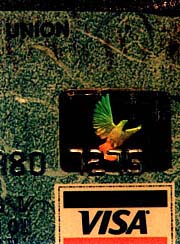 | |
| Figure 3a: VISA dove #1 | Figure 3b: VISA dove #2 |
Very few people who have seen both versions of the VISA holograms are even aware that they are different holograms, used in different parts of the world.
Second Step: Make holograms that can�t be copied
The second step in doing something about the problem is to make holograms that cannot be copied by optical or mechanical means such as those methods described in somewhat notorious paper I published many years ago (it can be found now at http://www.nli-ltd.com/publications/countermeasures.html). Methods for preventing copying were also outlined in the same paper.
A type of hologram label that is essentially impossible to copy using direct methods is shown in Figure 4. It is a transparent hologram, hot-stamped onto a pre-printed paper substrate. Mechanical copying would be very difficult, and would almost certainly copy the rough surface of the paper. Optical copying would similarly copy the rough surface of the paper as well as the printing on it. In order to make a visually passable copy of this kind of hologram, it would be necessary for a graphic artist and a skilled holographer to collaborate to re-originate it.
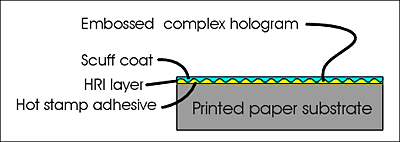
Figure 4: A secure holographic label
It�s not very difficult to make a new hologram from scratch that will fool the average human clerk; but it is essentially impossible (with today�s technology) to do it so well that it will fool a human expert.
Third Step: Build human-expert capabilities into a hologram reading machine
The third step in solving the problem will be to make a format-independent machine reader for holograms. There are, of course, some hologram readers already available in the industry. However, they depend on the use of particular machine readable features in the holograms. Typically, they use diffraction gratings with various grating pitches and orientations to direct a laser beam to photodetectors in particular locations. This is illustrated in Figure 5. Unfortunately, most diffraction gratings are reasonably easy to counterfeit, as most holographers should attest if you ask them privately.
And, perhaps equally important, those machine readers cannot read a VISA dove or a Mastercard hologram. What is really needed is a very smart hologram reader: a reader that can read and interpret the microscopic features of any hologram or DOVID, and do it as well as a human expert with a microscope and a laser can.
The ultimate hologram reading machine should, for example, be able to analyze the detailed diffraction characteristics of a hologram at every point on the hologram with a resolution finer than the size of the smallest dot produced by a dot-matrix hologram printer.
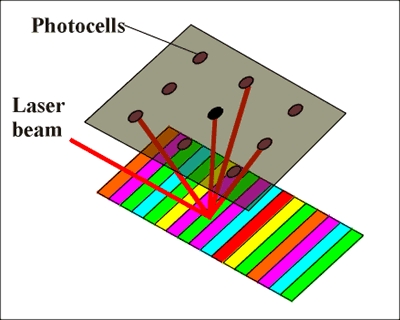
Figure 5: A Holographic Bar Code & Reader
VII. Possible Roles for a Universal Hologram Reader Optical Document Security
We can define a Universal Hologram Reader as a reader that does a good job of detecting counterfeit diffractive objects regardless of whether they are rainbow holograms, dot-matrix holograms, 2D3D holograms, kinegrams or complex diffraction gratings. It must be able to read holograms regardless of the reference-to-object angles used to make them.
In my opinion, the most important contribution that a Universal Hologram Reader can make in the security industry is to turn holograms into an honest-to-goodness front-line anticounterfeit security device. Instead of being excellent forensic devices that are pretty but have very little front-line counterfeit detection value, holograms will become extremely reliable front-line indicators of a product�s validity. In short, a Universal Hologram Reader can allow holograms finally to live up to their promise as a security device.
Some specific roles that a Universal Hologram Reader might serve are as verifiers of holograms on:
- currency
- credit cards
- drivers license cards
- hotel door keys
- passports
- concert tickers
- access control cards
- corporate ID cards
If a Universal Hologram Reader can read holograms in arbitrary orientations without direct contact, it might enable holograms to supplant bar codes in some applications. And, of course, it would be able to detect counterfeit holograms or kinegrams on:
- product packaging
- labels
- postage stamps
- hang tags
- official documents
- and so on
Although this list is not new at all, it has an entirely different meaning when and if a Universal Hologram Reader becomes widely available. Instead of just being a list of things holograms can be stuck onto, the list becomes a list of things that can no longer be successfully counterfeited if they are protected by a suitable hologram that is read by the Universal Hologram Reader.
In short, a Universal Hologram Reader would greatly improve the security value of a basically ordinary hologram. By doing so, the Universal Hologram Reader would help hologram manufacturers and security printers sell a lot more holograms over the next few decades.
VIII. The Technical Challenge of a Universal Hologram Reader
It is reasonable to question whether or not it is even technically possible to make a Universal Hologram Reader.
A high-resolution microscope can reveal the detailed structure of a hologram easily enough. But consider the amount of information that a hologram contains. Let�s say that the microscope can measure the surface relief structure inside a 25 micron spot. The structure is a two-dimensional array of information, which should probably be measured with a resolution of at least 480 x 480 pixels, and each bit needs at least sixteen gray levels. So each spot in the hologram requires nearly a million bits to describe.
A 1" x 1" hologram would contain more than six million spots, so a complete description of the hologram requires approximately a trillion bits.
In a practical application, a counterfeit hologram must be detected in one or two seconds. Detailed comparison between a valid hologram and a counterfeit by microscopic analysis would require something akin to convolution, which might demand as many as 2000 four-bit multiplications and 2000 four-bit additions for each spot. All told, a complete comparison would require something on the order of a few hundred trillion operations, and would need to be done in a second or two. So the real technical challenge in developing a Universal Hologram Reader is not an optical challenge at all; it is a computational challenge. One way or another, it is necessary either to do computations at an unreasonably high speed or else to reduce the total amount of computation by about five orders of magnitude.
| The Technical Challenge of a Universal Hologram Reader | |
| Information Capacity of a Hologram: | ~6 terabits |
| Reading/Analyzing/Correlation time: | ~2 seconds |
| Practical Size: | ~10 cm x 20 cm x 5 cm |
| Affordable System Cost: | ~$600 (US) |
IX. New Light Industries� Universal Hologram Reader
New Light Industries has accepted the challenge and has taken a three-pronged approach, which was funded by the U. S. Department of Defense in its early stages.
- First , we use a massively parallel signal processing chip to do image processing computations many times faster than a Pentium computer. This chip is an FPGA (Field Programmable Gate Array) with about 35,000 logic gates that operate in parallel.
- Second , we spent most of the past 18 months analyzing the statistics of microscopic patterns in holograms and developing efficient ways to recognize those features that most reliably distinguish between a valid hologram and counterfeits of the hologram. To a large extent, this has been accomplished by the method known as evolutionary computing, in which Darwinian evolution is harnessed to automate the process of electronic circuit design or algorithm design. In essence, we created sets of random interconnections among the logic gates in an FPGA. We processed the microscope imagery from holograms in the FPGA, and gauged the ability of the FPGA to distinguish between valid and counterfeit holograms. We started with a large population of interconnection sets, and let the sets compete for the right to produce offspring. Interconnection sets that performed better were more likely to be selected as mates. One of the criteria we used to gauge performance was the ability to avoid being confused by noise caused by fingerprints, dirt and scratches. Offspring to compose the next generation were formed by building new interconnection sets that combine portions of two parent sets. We also tossed in a few mutations by randomly making and breaking some connections. After a few thousand generations, we ended up with a selection of new and rather messy feature recognition algorithms that execute very rapidly in an FPGA.
- Third , we harnessed a reconfigurable FPGA to do high-speed comparisons between reference patterns taken from a valid hologram and the feature patterns extracted from a hologram of unknown parentage. In essence, the FPGA does nonlinear, space-variant convolutions for us.
We built all this into a compact prototype hologram reader designed to detect counterfeit credit cards and ID cards. This prototype works very well, and easily detects the differences between original holograms and the best counterfeits we have been able to find, make, or have made. The next version of our Universal Hologram Reader will employ custom chips to reduce size, increase speed even further, and reduce manufacturing costs.
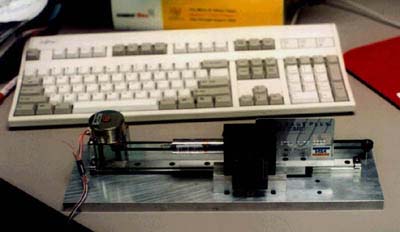
Figure 6: Universal Hologram Reader under development at NLI
We expect the first applications for a Universal Hologram Reader to be in credit card and ID card readers combined with mag stripe readers. Figure 6 illustrates how a reader with these capabilities might fit into the world.
A universal hologram reader in a system like this would have two key advantages:
- It provides expert-level inspection at the retail counter, turning holograms into counterfeit detection devices, rather than merely forensic devices.
- Because it is universal, it makes all holograms and DOVIDs more secure as long as they incorporate some simple anti-copying features.
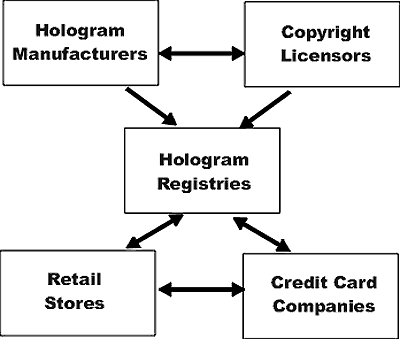
Figure 7: A possible product diversion and counterfeit prevention network using Universal Hologram Readers
X. SUMMARY
The key points made in this paper are:
- Currently only an expert can detect a skillfully counterfeited hologram. Holograms offered now as anticounterfeit devices have a high forensic value, but limited value as a front-line defense because there is not a convenient and reliable way to detect counterfeit holograms at the retail counter.
- Current machine readers for holograms require special kinds of holograms in special formats; they cannot detect a counterfeit VISA dove.
- A Universal Hologram Reader is a major technical challenge, but it turns out to be feasible.
- A Universal Hologram Reader will give security holograms a new lease on life, and will help establish and maintain holograms as a effective front-line defense against counterfeiting well into the next century.







